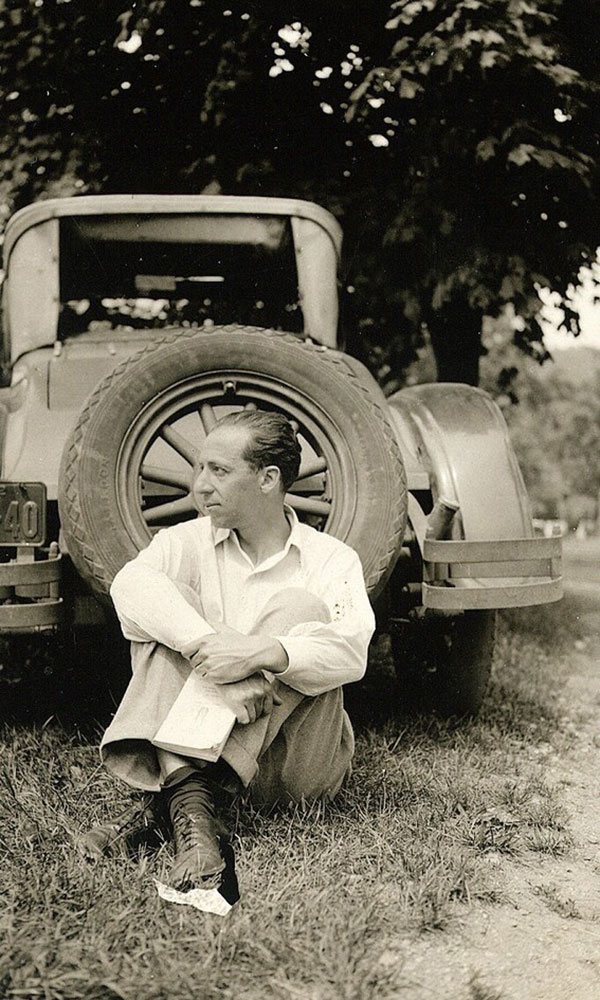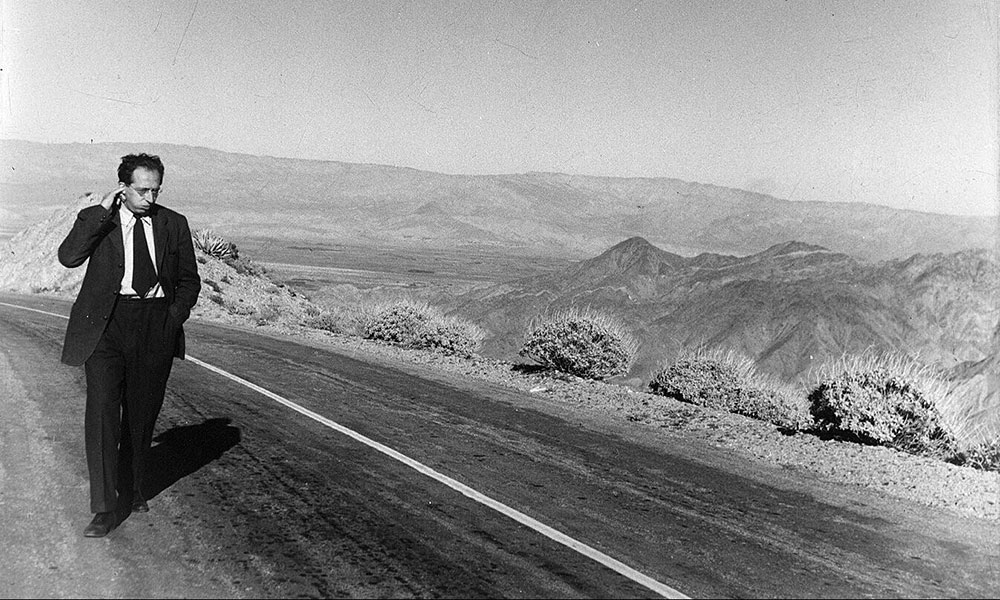By now, you should know that I’m a music obsessive. Any chance I get to write about the artists that move me for saratoga living I take—whether it be The Weepies or The Figgs or Garland Nelson (there are many more). Some of you might also know that I enjoy playing music in my free time; I rock a mean acoustic and electric guitar (and some decent vocals) in my band, Turnover Mule. (We’ve been in the studio with recent saratoga living Power Player Jim Mastrianni, working on our first EP and drinking a lot of his seltzer.) But something most of you probably don’t know about me is that long before I ever spilled any ink on a band or picked up a six-string, I was very much a classical music nerd. I started off on the piano, which I studied for six years, taking lessons privately and then at Skidmore College. I then switched over to the cello in Fourth Grade, which I played for more than a decade, performing in all of the city, county and state orchestras, and even doing a short turn with the Skidmore College orchestra as a teenager. I took lessons from Skidmore’s then-cellist in residence Ann Alton, who also taught at the Manhattan School of Music Preparatory Division and the PreCollege Division of the famed Juilliard School. And I kept the instrument up in college, playing for a semester in Connecticut College’s orchestra and working under (and playing in ensembles with) the late, great Frank Church of the Yale Cellos.
Then I up and quit.
I never did give up listening to classical music, though. Mixed in with my favorite rock albums from artists such as Son Volt, The Misfits, Big Star and Pete Yorn were always a number of go-to classical records. My favorite of them all was always the six-song, hour-plus-long Copland: Greatest Hits (1991), featuring the best-known compositions of American composer Aaron Copland. The album kicks into gear with the “call to arms” for the ages, Fanfare for the Common Man (1942), which gives Rush (and most ’70s rock bands, for that matter) a run for their money with its next-level gong work; and includes other choice cuts such as the ballet suite, Billy the Kid (1938), and the album-closing “Hoedown” (from the 1942 ballet, Rodeo), which I performed numerous times in high school orchestras and later rediscovered on the 1972 prog-rock classic Trilogy by Emerson, Lake & Palmer.
But it was always track No.2, Appalachian Spring (1944), that I kept coming back to, time and again. At this point, I’ve probably listened to the 20-minute-plus piece more than Led Zeppelin’s “Stairway to Heaven” and The Who’s Tommy combined. What I love so much about Appalachian Spring is its distinct American-ness; every time I listen to it, I’m whisked away to this verdant prairie, awash with wild flowers, where I can picture untethered horses roaming hither and yon; farmers up before the sun, tending to their fields; and farmhouses, surrounded by white picket fences, with American flags hanging triumphantly on their front porches. It’s a sonic Andrew Wyeth painting. And I’m not alone in thinking this: Appalachian Spring became an American classic soon after it was premiered, later winning Copland a 1945 Pulitzer Prize for Music. It’s a musical masterwork of mysterious power that genuinely makes the hair on the back of my neck stand up every time I hear it.

Fourteen years before Copland even had the germ of the idea for what would become Appalachian Spring, he was sitting in quiet contemplation at Yaddo, the famed artists’ colony in Saratoga Springs, NY, working on his first major solo piano work, Piano Variations, which itself would help turn the American classical music scene on its head. “Even though he was born in Brooklyn and spent most of the first half of his life based in New York City, he always tried to get out of the city whenever he could, and he’d take short-term rentals in then-rural environs [outside] of New York City and was an inveterate residency- and artist-colony-goer,” says Michael Boriskin, artistic and executive director of Copland House. During the previous decade, the upstart composer’s star was on the rise considerably. Having studied music at the American Conservatory near Paris in the early 1920s, Copland returned to the states and almost immediately began publishing, seeing major performances of one of his orchestral works occur in New York City and Boston and winning a Guggenheim fellowship, among other highlights. By the time Copland found his way to Yaddo in 1930, America was steeped in the Great Depression. But despite hard times, Copland’s home territory of NYC was a focal point for the avant-garde movement, and he found himself in the right place at the right time. “Copland was one of the first to help define the sound and shape and sense of an American musical identity in the concert hall, in film and on the dance stage,” says Boriskin. He felt that there wasn’t a recognizably American musical idiom, and he did so by bringing the rhythmic quirkiness of the music du jour, jazz, into his compositions, along with cowboy and Western themes and other hat-tips to the music of the times. In other words, he was taking the assumed-to-be unchangeable format of classical music and giving it a 360-degree makeover. Sort of what artists such as Kanye West and Billie Eilish have done in recent years within their genres.
While many Americans didn’t see the other side of the Great Depression, Copland was able to hang on by teaching music at The New School for Social Research. There, he met ballet dancer Martha Graham, for whom he’d eventually write Appalachian Spring. Graham and pianist Liz Coolidge commissioned the ballet in 1942, and Copland composed the score in a number of different places, including Mexico, where he’d be earlier inspired to compose El Salón México (1938), and while working on a 1943 Hollywood film, The North Star, about Ukrainian villagers fighting off the Nazis. (It was later targeted by the House Un-American Activities Committee for being pro-Communist.)

Appalachian Spring premiered at the Library of Congress in Washington, DC, in 1944, and as Boriskin notes, just before the show started, Copland noticed something a little bit strange in the program. When he’d completed the ballet, he’d given it the simple, placeholder-y name of Ballet for Martha. But on the program, it had a much trendier, sexier name, Appalachian Spring. It turned out that his friend Graham had renamed it. When Copland asked her where she’d gotten the name, she explained that it was a line from a poem by Hart Crane. He then asked her if his composition had anything to do with the poem, and Graham said no; she’d just liked the phrase. “This raises the issue of how much a title can affect how listeners or viewers perceive [a work],” says Boriskin. And I think it begs the question: Would Copland have won the 1945 Pulitzer Prize for a composition entitled, Ballet for Martha?
The ballet itself depicted an American pioneer wedding at a farmhouse in rural Pennsylvania, with a cast of characters that included a revivalist preacher, pioneer woman and the young, soon-to-be-married couple. Despite portions of Pennsylvania being located along the Appalachian Trail and the state part of the region known as Appalachia, Copland didn’t have an Appalachian-tinged image in his mind when writing the score, as is evidenced by his original title for the work. He later admitted that “I gave voice to that region without knowing I was giving voice to it.” The basic scenes depicted in the ballet were also metaphoric, explains Boriskin. “The [story of the ballet] was just the device to get into the story and scenario about community and friendship and struggle and survival and love,” he says.
The ballet, which originally called for a 13-instrument orchestra, was later shortened by 10 minutes and arranged to accommodate a much larger orchestra, maybe its best-known or most-listened-to version. (It clocks in at just over 20 minutes, all said and done.) It then went through a few more orchestral nips and tucks, explains Jeremy Rothman, vice president of artistic planning at the Philadelphia Orchestra, one of which was done at the request of maestro Eugene Ormandy, who originally brought the orchestra to the Saratoga Performing Arts Center (SPAC) for its first summer residency, one that it’s kept every year since the mid ’60s. It’s this full orchestral suite that will be premiered at SPAC on August 8, along with three other contemporary works—Jennifer Higdon’s blue cathedral, Ottorino Respighi’s Fountains of Rome and Mason Bates’ Anthology of Fantastic Zoology—all of which have a shared theme of nature and were handpicked by the Philadelphia Orchestra’s current Music Director and conductor Yannick Nézet-Séguin. (The orchestra kicks off its annual summer residency today, July 31, and Appalachian Spring will be one of 19 SPAC debuts on its summer schedule.) And yes, it seems sort of weird writing this, but the internationally acclaimed orchestra has never performed Appalachian Spring at SPAC before. How is it possible that the piece didn’t get played in 53 years worth of summer residencies by the orchestra? I ask Rothman. “I don’t know,” he says, with a chuckle. “This is, of course, one of the most important and beloved works of the 20th century and is fundamentally Americana, and how that didn’t get into the repertoire [of the orchestra] does seem somewhat surprising.” Better late than never, I guess; SPAC’s open-air amphitheater, in the middle of a wooded state park, with a babbling brook literally just down from the load-in area backstage, makes for a picture-perfect setting to share it with a Saratoga audience for the first time.
Now, whether an audience sees it performed as a ballet or hears it as a straight orchestral piece, Appalachian Spring still stands up—and this duality is what makes the piece timeless, says Boriskin. A good example of this aesthetic would be the John Williams-composed themes from Jaws or Star Wars. Even without the blockbuster movies playing along on a screen nearby, listeners can still enjoy the scores as standalone soundtracks. At least for me, that answers the question of whether Appalachian Spring would’ve won a Pulitzer had it been called Ballet for Martha: I think the answer is, resoundingly, yes. And the critics of the day agreed. “The piece was a triumph, already, at that premier in Washington in 1944,” says Boriskin. “It was received enthusiastically both by the public and by critics. Early on, it was already called the quintessential American dance work, [and] the music itself took on a life of its own very soon thereafter.” It would be performed as an orchestral work by everyone from the Boston Symphony Orchestra in the 1940s to the Philadelphia Orchestra, as early as the ’50s. A quick investigation of Spotify reveals versions of the work by the Minnesota Orchestra, the Park Avenue Chamber Symphony, New York Philharmonic, Berlin Philharmonic and London Symphony Orchestra. The piece has truly gone global.
In the early ’60s, more than a decade after Appalachian Spring had been woven into the American consciousness, Copland found himself at a Columbia Records recording session, conducting the piece amidst a room full of top classical musicians. With the tape rolling in the minutes before the first notes were played, Copland can be heard saying to the players, “I assume everybody knows this piece.” Think about that for a second, says Boriskin. “How many other new works can you think of where somebody could say that, half jokingly but half seriously, and he was completely right about it?” After its big SPAC premier, I hope that “everybody” includes all Saratogians.


